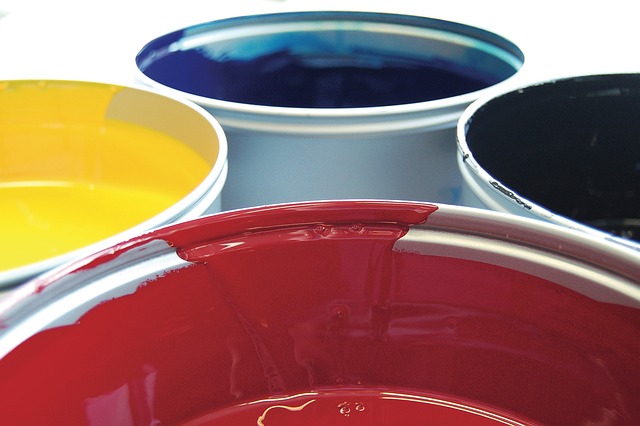Table of Contents
The Basics of a DIY Professional-Looking Paint Job
Starting a DIY paint project involves more than simply picking up a paint brush and a can of paint. First and foremost, it is vital to understand the fundamentals to ensure a professional-looking result. In the case of painting the interior of a house or apartment, each step – from preparation to finishing – contributes to the quality of the final outcome.
Preparation involves cleaning and priming surfaces, which helps to create a smooth base for the paint and prevent it from peeling or flaking. Similarly, using the right tools, such as brushes and rollers, paves the way for a smooth and even application. Further, selecting the right type of paint and understanding how different paints behave on various surfaces is key. Hence, understanding these basics elevates an average DIY paint job into something of professional quality.
Selecting the Right Tools for Your Paint Project
In the pursuit of a stunning transformation of the interiors of your home or apartment, one essential step is selecting the right painting tools. Just like a musician can’t perform without a finely-tuned instrument, a DIY warrior cannot achieve that show-stopping finish without the proper equipment. Brushes, rollers, paint trays, drop cloths, and painters tape are a few of the necessary tools you will need. Needless to say, the quality of these tools dramatically influences the end result. Therefore, investing in high-quality brushes and rollers will help ensure a smoother and more even application and finish.
The journey of learning how to paint the interior of your house or apartment also includes understanding the specific tools needed for the job. Size matters significantly when choosing your brushes and rollers. For example, larger flat brushes or wider rollers are ideal for painting expansive wall areas, while smaller angle brushes are more suitable for painting edges or tight corners. Additionally, the type of roller cover texture or brush bristle can influence how the paint is applied and ultimately the texture of the finish. Remember, the right tool not only aids in efficiency but also enhances the quality of your paint job.
Preparing Your Workspace for Your DIY Paint Job
The first step to a successful DIY paint job is ensuring that your workspace is adequately prepared. Creating a well-prepped workspace essentially means safeguarding every item in the room that you don’t want to get paint on. Make sure to remove all fixtures, if possible, and cover all furniture with thick plastic sheets or drop cloths. Remember to also cover the floor to avoid any paint drippings, which can stain your carpet or hardwood.
When preparing the interior of your house or apartment for painting, all surfaces should be clean and free of dust. A little bit of cleaning effort can go a long way toward ensuring a smooth and professional-looking finish. Use a damp cloth to clean off any accumulated grime and dust from the walls. After cleaning, use painter’s tape to protect the areas where the walls meet the ceiling, floor, and adjacent walls. This step will save you from potential touch-up work later. This way, you can focus solely on the task at hand and create the perfect DIY paint job.
Choosing Your Paint: Tips and Suggestions
One of the essential components of a successful DIY painting project is the selection of the right paint. This choice not only dictates the appearance of your walls but greatly impacts the longevity and overall quality of your paint job. When it’s time for you to decide how to paint the interior of your house or apartment, it’s crucial to consider a couple of decisive factors. Start by recognizing the amount of traffic and general wear that space experiences, as areas like hallways or children’s rooms might benefit from a semi-gloss or high-gloss finish due to its durability and easy-to-clean nature.
On the contrary, living rooms and bedrooms, where intimate ambiance is desired, matte or satin finishes are best as they tend to diffuse light, softening the room’s aesthetic. Also, it’s vital to consider the existing color of your walls. If darker or boldly hued, invest in a quality primer to ensure proper coverage. Lastly, remember, the paint’s shade can dramatically transform a room. Warmer tones create a cozy environment, whereas cooler colors lend a calm, peaceful aura. Therefore, understanding and choosing your paint thoughtfully can transform your DIY painting experience.
Priming: Why It’s Essential for a Quality Finish
Priming is an indispensable step in the process of painting the interior of your house or apartment. It sets the stage for a crisp and clean finish, giving the topcoat of paint a smooth, clean canvas to adhere to. When used properly, a good primer can make your paint job last longer and look professional, even if you’re doing it yourself. It can cover up dark colours, prevent stains from showing through, and reduce the number of coats of paint you would otherwise need.
The type of primer you choose can also play a huge role in the overall look and longevity of your paint job. Oil-based primers, for instance, are excellent for use on wood or over oil-based paint as they seal out stains and knots in the wood which can bleed through latex-based paints. Most importantly, priming also ensures that your paint adheres strongly to the surface, improving its durability. So, while it may be tempting to skip this step in an effort to speed up your project or save on costs, not priming can end up costing you in time, money, and quality in the long run.
Applying the First Coat: Techniques to Know
To get your DIY painting project off to a successful start, the implementation of the first coat of paint on your walls virtually sets the stage for how the final look will unravel. It is perhaps one of the most crucial steps in learning how to paint the interior of your house or apartment. The first coat is commonly referred to as the ‘base coat’, and it goes a long way into defining the durability and overall appeal of your paint job. Precision and careful analysis of your painting strategy are therefore quite essential during this stage.
A key technique to mastering the first coat application involves loading your brush or roller evenly. Dip your brush into the paint, only about half or a third of the way up the bristles, to avoid overloading. For rollers, roll it back and forth in the tray until it’s evenly coated. Start by painting the edges or ‘cutting in’, then move towards the center of the wall. This practice ensures a more uniform look in the final outcome. Indeed, knowing how to strategically apply this first layer of paint is critical to making your DIY efforts look like they were done by a professional.
Working with Different Paint Types: Latex, Oil, and More
The interior paint job of your house or apartment largely depends on the type of paint you plan on using. Latex and oil-based paints are among the most popular types in the market, each with its own set of characteristics that make it suitable for specific purposes. Latex, water-based paint, is highly favored for its quick-drying nature, easy cleanup, and long-lasting durability. It’s also resistant to yellowing and an excellent choice for walls and ceilings.
On the other hand, oil-based paint is renowned for its rich, glossy finish and superior adhesion, making it ideal for high-traffic areas, trims, and doors. Despite its longer drying time and the necessity for mineral spirits for cleanup, oil paint renders a level of smoothness that latex can rarely match. Understanding these nuances are crucial to effectively working with these different paint types, allowing you to achieve a professional-looking paint job.
Achieving a Smooth Finish: Techniques and Tricks
A smooth finish is something that any DIY painter aspires to achieve. It can significantly enhance the overall look of your house and gives a professional touch to your DIY paint job. There are several techniques and tricks that you can apply to create a flawless finish. Foremost, if you want to paint the interior of your house or apartment, quality tools are of the essence. High-grade brushes and rollers, along with a good quality paint, often result in a smoothly painted surface.
The “W” painting technique significantly contributes to achieving a smooth finish. First, start by painting a big “W” on your wall. Without reloading your roller, fill in the unpainted sections of the “W”. This ensures the application of paint in sections and prevents the previous sections from drying up before the next is started, thus ensuring a consistent, smooth finish. Lastly, it’s always crucial to let the first coat dry completely before you apply the second. This will allow the paint layers to adhere properly, resulting in a clean and smooth surface.
Layering Paint: How to Do It Right
Layering paint with precision is fundamental to achieve a smooth, professional finish when painting the interior of a house or apartment. It is more than just applying one coat over the other; it involves a strategic application to ensure each layer adds depth and richness to the overall appearance. Start with a sound undercoat, then gradually build up layers, allowing each to dry thoroughly before adding the next. This method not only conceals imperfections but also provides a durable and long-lasting finish.
In reality, using this technique can be tricky. The trick lies in knowing how much paint to use for each layer and avoiding common pitfalls such as streaks or visible brush strokes. A worthwhile practice is to start with a thin layer and steadily increase the thickness with each subsequent layer. Moreover, remembering to maintain the same direction of brush strokes throughout the process is crucial to maintain consistency. This can feel time-consuming, but patience is key to mastering the layering technique and achieving a professional outcome. Above all, don’t rush the process; savor and enjoy each step, and the results will amaze. With time and practice, anyone can learn to expertly layer paint and transform the interior of their house or apartment.
Troubleshooting Common Painting Problems
A successful paint job isn’t always a walk in the park. Various obstacles can arise during the process, some common ones being streaks and peeling. Streaks often appear when a paintbrush is overloaded and paint is unevenly applied. It’s a more common issue when using darker colors as the inconsistencies become more noticeable. The key here is to start with a lesser amount of paint on your brush and gradually build up by applying thin, even layers.
Peeling, on the other hand, can occur when painting over a surface that is either not properly cleaned or primed. Even when trying to refurbish the interior of your house or apartment, it’s essential to spend time on surface preparation. By ensuring the surface is clean, dry, and primed adequately, one can counteract the peeling issue. Remember, in painting, most of the desired result comes from ample preparation before the first stroke of your brush.
Maintaining Your Paint Job: Tips for Long-lasting Results
Maintaining the fresh and vibrant result after pouring effort and time into painting the interior of your house or apartment relies on a few simple yet crucial steps. Firstly, cleaning is key; dust and dirt on walls can break down paint over time. Gentle cleaning with a soft cloth or sponge, mild detergent, and warm water can effectively remove dust without damaging the paint. Always remember to dry the surface thoroughly after cleaning, as moisture can lead to peeling and cracking.
Another important factor is protecting the paint from unnecessary damage. Direct sunlight and extreme temperatures can fade and wear out paint; hence, using window treatments to control sunlight exposure or maintaining a stable indoor climate can enhance the longevity of the paint job. Lastly, touch-ups are essential for maintaining the crisp, professional look of your paint job. Having extra paint on hand from the original job allows for easy and accurate touch-ups. These pointers, when followed religiously, will ensure a long-lasting and stunning paint job.
Safety Tips While Painting: Ensuring a Safe DIY Project
Painting the interior of your house or apartment can be a fun, rewarding DIY project. However, it’s crucial to prioritise safety throughout the process. All painting tasks, big or small, require due diligence concerning risks, including chemical exposure, falls, accidental ingestion or inhalation, and skin irritation. You must be aware of safety measures such as wearing protective gear and using paints with low volatile organic compounds (VOCs).
The essential safety gear includes safety glasses, gloves, long-sleeved shirts, and pants to protect your skin and eyes from direct contact with the paint. It’s also important to ensure proper ventilation to avoid the buildup of harmful fumes. Furthermore, if you’re working from a height, take precautions to avoid falls and always have a stable and reliable platform to stand on. Remember, safety should never be compromised while pursuing the perfect paint job for your home.
The Importance of Cleaning Up: Post-Painting Procedures
Cleaning up after finishing a painting project is just as crucial as the preparation before it starts. It ensures that the workspace is left neat and tidy, which reduces the risk of accidents such as tripping over paint cans or stepping on sharp tools. This process also remedies any unwanted drips or spills that might have occurred during the painting, preserving the newly painted surfaces.
Part of this process involves proper disposal of used materials. Paint cans, brushes, rollers, and drop cloths should be cleaned, stored, or disposed of in an environmentally friendly manner. The cleanup stage also provides an opportunity to inspect the paint job thoroughly and make any touch-ups if necessary. Overall, post-painting procedures are an essential step in any DIY painting project to maintain the aesthetics of your house or apartment, and ensuring that the results of your hard-earned efforts are sustainable and long-lasting.
Here are the steps to follow when cleaning up after a painting project:
• First, ensure all paint cans are properly sealed. This is important as it prevents the paint from drying out and can be used for touch-ups later on.
• Next, clean your brushes and rollers thoroughly. If you’ve used water-based paints, warm soapy water will do the trick. For oil-based paints, you’ll need to use mineral spirits or turpentine.
• Once cleaned, store your brushes and rollers in a dry place where they won’t get damaged.
• Drop cloths should also be cleaned after use. Most drop cloths are reusable and can be washed in a washing machine.
• Inspect the newly painted surfaces for any drips or spills that may have occurred during painting. These can typically be removed with a damp cloth if caught early enough.
• Dispose of any unusable materials responsibly. Check local regulations regarding disposal of paint cans – some areas offer recycling programs while others require special handling at waste facilities.
The importance of post-painting cleanup cannot be overstated; not only does it make your workspace safer by eliminating potential hazards like unsealed paint cans or sharp tools but also ensures that your new paint job looks its best and lasts longer.
Remember: The key to an effective DIY home improvement project isn’t just about doing everything yourself—it’s about knowing how to effectively manage every stage of the process from start to finish!



